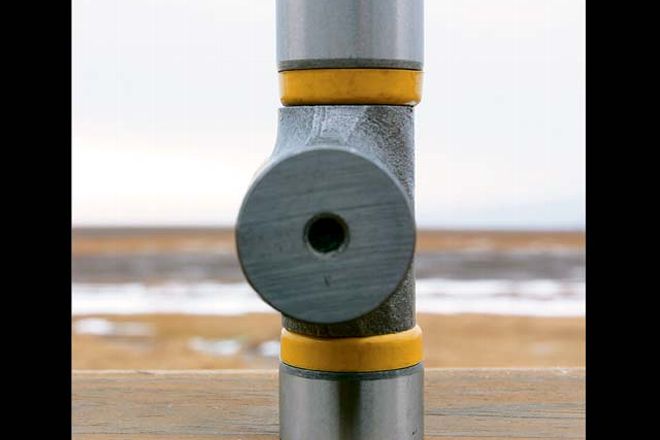
 Ken Brubaker
Senior Editor, Four Wheeler
Ken Brubaker
Senior Editor, Four Wheeler
Start talking about universal joints, and the common man's eyes glaze over. For us 'wheelers, however, the constantly evolving world of the U-joint is fodder for hours of conversation and debate. Heck, we'll admit to getting downright giddy on the subject from time to time.
Well, now we have something new to talk about. Tom Wood's Custom Drive Shafts has recently thrown an interesting new U-joint into the mix with the introduction of the Super-Flex universal joint. Wood says that this new joint was designed in collaboration with rockcrawler Chris Durham and put into production by the company. This joint is designed to solve binding issues in certain situations. A couple of examples are a front CV driveshaft that is binding at the axle due to extreme driveshaft angles, or a rear CV driveshaft that is suffering binding at the axle due to spring-wrap issues resulting from a spring-over axle conversion. Wood does not recommend using the joint in a standard two-joint driveshaft because its offset trunnion design creates too much vibration.
We hung out while Attitude Performance in Arlington Heights, Illinois, installed one of these joints in a late-model solid-axle Chevy that was experiencing front driveshaft bind at the axle. Installation is no different than that of a standard U-joint except that it is possible to install the joint backwards, which is another new twist of the Super-Flex.


